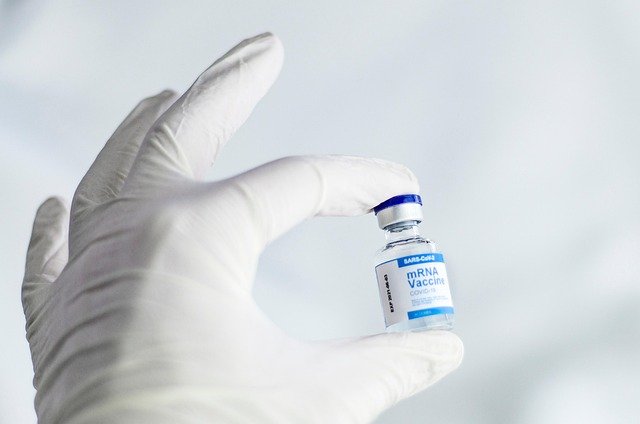Understanding Modern Osteoporosis Treatment Options
Osteoporosis affects millions worldwide, weakening bones and increasing fracture risk. With advancing medical research, treatment approaches have evolved significantly, offering patients more effective options than ever before. Modern therapies focus on slowing bone loss, improving bone density, and reducing fracture risk through various mechanisms. Understanding these treatment options helps patients and healthcare providers make informed decisions about managing this progressive condition that primarily affects older adults, particularly postmenopausal women.

Osteoporosis represents a significant health challenge characterized by decreased bone density and increased susceptibility to fractures. This condition develops gradually, often without symptoms until a fracture occurs. The disease affects the microarchitecture of bone tissue, making bones fragile and prone to breaking from minor falls or even routine activities.
Traditional treatment approaches have primarily focused on calcium supplementation, vitamin D, and lifestyle modifications. However, modern medicine has introduced sophisticated therapeutic interventions that target specific cellular pathways involved in bone metabolism. These treatments work by either slowing bone breakdown or promoting new bone formation, with some newer therapies addressing both processes simultaneously.
How New Therapies Improve Bone Density in Osteoporosis
Contemporary osteoporosis treatments utilize advanced understanding of bone biology to enhance bone density effectively. Bisphosphonates remain a cornerstone therapy, working by inhibiting osteoclast activity and reducing bone resorption. These medications can increase bone mineral density by 3-8% in the spine and 2-5% in the hip over two to three years.
Denosumab represents another significant advancement, functioning as a monoclonal antibody that blocks RANKL, a protein essential for osteoclast formation and function. This mechanism results in substantial increases in bone density, with studies showing improvements of 9-13% in the lumbar spine over three years. The treatment requires subcutaneous injections every six months, offering convenience compared to daily oral medications.
Anabolic agents like teriparatide and abaloparatide stimulate bone formation by mimicking parathyroid hormone action. These treatments can increase bone density more rapidly than antiresorptive therapies, with teriparatide showing spine density increases of 10-14% over 18-24 months. However, these medications are typically reserved for patients with severe osteoporosis due to their higher cost and injection requirements.
Innovative Medications for Osteoporosis in 2025
The pharmaceutical landscape for osteoporosis continues expanding with novel therapeutic approaches. Romosozumab, a dual-action medication, simultaneously increases bone formation while decreasing bone resorption. This unique mechanism allows for rapid bone density improvements, with clinical trials demonstrating spine density increases of up to 17% within 12 months.
Selective estrogen receptor modulators (SERMs) like raloxifene and newer agents such as bazedoxifene offer alternatives for postmenopausal women. These medications provide bone protection while potentially offering cardiovascular and breast cancer risk reduction benefits. The development of tissue-selective estrogen complexes combines SERMs with estrogens to optimize bone benefits while minimizing risks.
Cathepsin K inhibitors represent an emerging class targeting a specific enzyme involved in bone resorption. While odanacatib showed promise in clinical trials, safety concerns led to its discontinuation. However, research continues into safer alternatives within this drug class that could offer effective bone protection with improved safety profiles.
Latest Clinical Trials on Osteoporosis Treatments
Current clinical research focuses on optimizing existing therapies and developing novel treatment strategies. Sequential therapy trials investigate the most effective ways to combine different medication classes, such as starting with anabolic agents followed by antiresorptive therapy to maximize bone density gains and maintain improvements.
Bone-building approaches under investigation include sclerostin inhibitors beyond romosozumab, Wnt pathway modulators, and growth factor therapies. These treatments aim to stimulate bone formation more effectively while maintaining safety profiles suitable for long-term use. Phase II and III trials are evaluating these agents’ efficacy in various patient populations, including those with glucocorticoid-induced osteoporosis.
Combination therapy trials explore whether using multiple medications simultaneously can provide superior outcomes compared to sequential treatment approaches. Early results suggest that combining anabolic and antiresorptive therapies might offer synergistic benefits, though long-term safety data remains under evaluation.
| Treatment Type | Medication Examples | Mechanism | Estimated Annual Cost |
|---|---|---|---|
| Bisphosphonates | Alendronate, Risedronate | Inhibit bone resorption | $200-$800 |
| Monoclonal Antibody | Denosumab | RANKL inhibition | $2,000-$3,500 |
| Anabolic Agents | Teriparatide, Abaloparatide | Stimulate bone formation | $25,000-$35,000 |
| Dual-Action | Romosozumab | Formation + resorption | $20,000-$30,000 |
Prices, rates, or cost estimates mentioned in this article are based on the latest available information but may change over time. Independent research is advised before making financial decisions.
Treatment selection depends on multiple factors including fracture risk, patient age, comorbidities, and previous treatment responses. Healthcare providers typically begin with oral bisphosphonates for most patients due to their proven efficacy and lower cost. Patients who cannot tolerate oral medications or have contraindications may receive intravenous bisphosphonates or alternative therapies.
Monitoring treatment effectiveness involves regular bone density testing, typically every two years, along with biochemical markers of bone turnover. These assessments help determine whether current therapy is providing adequate bone protection or if treatment modifications are necessary.
The future of osteoporosis treatment appears promising, with personalized medicine approaches gaining traction. Genetic testing may eventually guide treatment selection, while improved understanding of bone biology continues driving development of more targeted and effective therapies. Patient education and adherence remain crucial components of successful treatment outcomes, as even the most advanced medications cannot provide benefits if not taken as prescribed.
This article is for informational purposes only and should not be considered medical advice. Please consult a qualified healthcare professional for personalized guidance and treatment.




